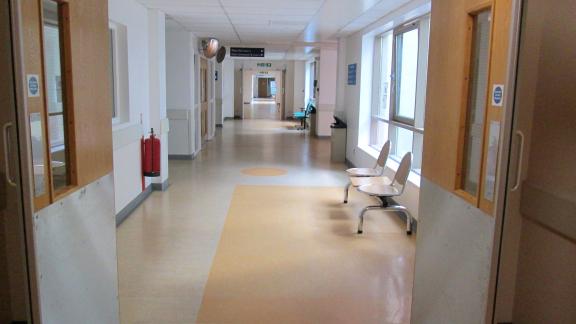2023/24 NHS priorities and operational planning guidance: what you need to know
Key points
On 23 December 2022, NHS England (NHSE) released its 2023/24 priorities and operational planning guidance, outlining three priority areas for the service: to recover core productivity; progress the aspirations in the Long Term Plan; and transform the health and care system for the future.
We welcome the step change in the approach to this year’s guidance. It is notably shorter with fewer targets and promotes genuine partnership between systems and the centre, with a greater emphasis on outcomes and less prescription on how to achieve them. It is also positive to see more flexible funding for systems to deliver on local priorities and that the focus on productivity sits alongside continued investment.
The planning guidance acknowledges that prevention and the effective management of long-term conditions are key to improving population health and curbing the ever-increasing demand for healthcare services. This is at the core of integrated care systems’ (ICSs') mission but will require split-screen thinking to deliver this longer-term change at the same time as addressing immediate operational pressures.
While there is progress still to be made, we believe that this signals a welcome trajectory for a new relationship between the service and the centre in the future, which empowers local leaders. This sentiment also reflects NHSE’s new operating framework and the aims of the Hewitt Review, which is welcomed in the planning guidance.
Our members are committed to the central aims in the planning guidance. Longer-term financial planning with fewer ‘penny packets’ will help them to deliver this. NHS performance is challenged everywhere, but this will be best resolved with local solutions rather than national instructions.
While we need to go further and faster in reducing the backlog of elective care, we are, however, concerned that returning to paying full unit prices reintroduces an element of payment by results, a retrograde step that risks undermining innovation, system working and value for money.
The plan rightly acknowledges the critical contribution of our workforce in delivering the priorities. Restating the commitment to publishing a long-term workforce plan is welcome, but decisions on funding and priorities are also required. The ask of leaders to refresh workforce plans for 2023/24 that can deliver more and different as set out in the guidance, while improving staff experience, requires additional investment and resources to what is a complex challenge.
Finally, given the uncertainties around the impact of the current industrial action, which may last well into next year, we recommend that the objectives set out in this guidance are kept under review.

Overview
NHS England is asking systems to focus on the following tasks for 2023/24:
- Prioritise recovering core services and productivity
- Return to delivering the key ambitions in the NHS Long Term Plan (LTP)
- Continue transforming the NHS for the future
The guidance includes 32 national objectives against the first two priorities, covering 12 areas of the NHS. View the priorities in the table below (click the + symbol to expand).
The following sections summarise NHSE’s key evidence-based actions designed to help deliver the objectives set out.
Recovering core services
Delivering the key LTP ambitions and transforming the NHS
Financial arrangements
- NHS England is issuing two-year revenue allocations for 2023/24 and 2024/25. At national level, total ICB allocations (including COVID-19 and ERF) are flat in real terms with additional funding available to expand capacity. Capital allocations will be topped-up by £300 million nationally with this funding prioritised for systems.
- ICBs and NHS primary and secondary care providers are expected to work together to plan and deliver a balanced net system financial position in collaboration with other ICS partners. Further details will be set out in the revenue finance and contracting guidance for 2023/24.
- A 2.2 per cent efficiency target for 2023/24. This includes:
- reduce agency spending across the NHS to 3.7 per cent of the total pay bill in 2023/24
- reduce corporate running costs with a focus on consolidation, standardisation and automation to deliver services at scale across ICS footprints.
- ICB and provider plans should include systematic approaches to understand where productivity has been lost and actions needed to restore underlying productivity including, but not be limited to, measures to:
- support a productive workforce taking advantage of opportunities to deploy staff more flexibly – systems should review workforce growth by staff group and identify expected productivity increases in line with the growth seen
- increase theatre productivity using the Model Hospital System theatre dashboard and associated GIRFT training and guidance, and other pathway and service specific opportunities.
Next steps
Final joint forward plan submissions are due by the end of March, with board sign off.
NHS England will publish a Single Delivery Plan for maternity and neonatal services, an urgent and emergency care recovery plan and the general practice access recovery plan in the new year, as well as separate guidance to support the increase GP direct access.
Further details of funding, including for ERF, will be set out in the revenue finance and contracting guidance for 2023/24 and capital guidance update 2023/24.
We are also expecting NHS England to publish a consultation on the payment scheme for 2023/24 in January.
Analysis
This year’s planning guidance lands at a key moment for defining the future relationship between the centre and ICSs, as NHSE continues to redefine its future operating model and the Patricia Hewitt leads her review of ICS oversight and governance.
The consolidation of national targets provides greater clarity around priorities, making it more manageable to respond to as well as leaving more space for systems to define what they want to focus on locally
Overall, we welcome the step change in NHSE’s approach to developing the document in line with the new ways of working outlined in its new operating framework, including the engagement held to test the outline of the guidance with our members at an earlier stage. It is also positive to see more flexible funding for systems to deliver on local priorities and that the focus on productivity sits alongside continued investment.
We welcome that our members’ feedback to reduce the length and prescriptiveness of the guidance has been taken into account. It is notably shorter – half the length of last year’s – and appears to promote genuine partnership between systems. The consolidation of national targets provides greater clarity around priorities, making it more manageable to respond to as well as leaving more space for systems to define what they want to focus on locally.
The national targets rightly reflect the things the public are most concerned about. It is promising to see the guidance confirm that ICSs are best placed to understand population needs and that there is space for them to define specific objectives. Local autonomy is something we and our members have consistently called for as it will be a key determinant of the success of system working.
There is still further to go in devolving power to ICSs and allowing more local key performance indicators to be defined jointly with local partners
We welcome a greater emphasis on outcomes. The focus on the ‘what’ and the ‘why’, rather than the ‘how’ will enable leaders more freedom to work with the right partners and identify the levers they need to pull to achieve outcomes locally. We await clarity on how the local outcomes framework envisaged by the government’s integration white paper will interact with the national priorities. NHSE should work closely with the Department of Health and Social Care to ensure alignment between the local outcomes framework and NHSE’s operating framework and upcoming changes to its oversight framework. Patricia Hewitt’s findings as part of her review may help to clarify this interplay.
There is, however, still further to go in devolving power to ICSs and allowing more local key performance indicators to be defined jointly with local partners – ones that will jointly deliver both the recently prepared local integrated care strategies and the five-year joint forward plans being defined over the coming months.
On the latter we are encouraged that the guidance is being developed in consultation with a broad range of stakeholders. There is a careful balance to be struck between recognising that ICSs are collaborations with local government and not implying direction over local government colleagues. NHSE should work ever closer with the Local Government Association and the Department for Levelling Up Housing and Communities (DLUHC) to co-design guidance on five-year forward and other system plans to achieve this balance.
It is helpful that the guidance signals the importance of inequalities and prevention work and advises on best practice for NHS contribution to a system-wide approach and strong partnership with local government and other partners. While we welcome the mention of children and young people in relation to health inequalities and access to mental health services, the guidance could have gone further in highlighting the challenges. Our members have raised concerns about children and young people, particularly in relation to the backlog of care in community health services and the impact on children’s life chances.
NHS national objectives
In terms of what the objectives cover, we support the focus on recovering core services. We know that the pandemic created a shock to our lean health service and there is a need to tackle key metrics to support productivity and system flow. However, we think there is further to go to simplify and align objectives across the whole system.
Acute and community leaders will be watching the plans drawn up in partnership with their ICB with interest. Targets need to be realistic and deliverable, and reflect the challenges caused by workforce supply and retention, industrial action and the continued struggles of colleagues in social care. Acute leaders will recognise the value of PbR in driving elective performance but also recognise the need to guard against a mechanism that can make it harder to innovate across the whole pathway.
We are glad to see the guidance addresses one of the most important elements in delivering LTP commitments and ensure future sustainability – the government’s commitment to publish a long-term workforce plan next year. The importance of the discussions and decisions around investment priorities cannot be underestimated. In addition, the more immediate focus on the retention of existing staff is one which members are already actively working on. Members are telling us staff are finding it increasingly difficult to do their job and it is also becoming clear that government investment is needed if we are to support service delivery, transformation and improve the staff experience.
If social care markets continue to collapse, performance against many of these targets will continue to decline
Supporting an exhausted workforce will be key and while the focus on maternity services is entirely correct, leaders will reflect that increasing fill rates on maternity vacancies will be tough when, bluntly, the workforce does not exist. The same point applies to targets around reducing agency spend, where there is a fundamental tension between this principle and elective recovery targets when 133,000 vacancies exist across the NHS.
Key to the success of this will be gaining improvements in patient flow. The bed occupancy, ambulance handover and A&E waiting time targets are challenging, and leaders will reflect that next year’s focus with local government colleagues will need to be as much about investing in hospital avoidance schemes, as in discharge. If social care markets continue to collapse, then performance against many of these targets will continue to decline.
While we recognise the need to improve ambulance handover times and particularly category 2 handovers, there must be recognition of the role the whole system plays and that ambulance services are only able to respond effectively if wider system flow issues are improved, particularly ambulance handover delays. The additional allocation for ambulance services is welcomed.
It is vital that primary care is a strategic planning partner within systems to meet objectives set out in this guidance
We welcome funding to expand services to support delivery of the mental health LTP commitments and support the ambition to reduce reliance on inpatient care, as long as this is matched with the required resource and workforce to develop the right community services. Retention has been challenging, making transforming services and improving quality and safety without addressing workforce a near impossibility.
Primary care has a key role in the delivery of the planning guidance. We not only support improving access to primary care services as a core principle but see primary care at the forefront of addressing health inequalities. It is vital that it is a strategic planning partner within systems to meet objectives set out in this guidance, but this must be matched by the right national support for core services and the sustainability of general practice. This is particularly important as demand increases and primary care professionals continue to work longer hours to meet it. Therefore, we also welcome the commitment to the ARRS roles beyond those that have already expanded the workforce and made available new skills. This must be further supported with a strong and positive national communications plan.
Funding and productivity
Protection of ICS funding in real terms, including COVID-19, elective recovery and making winter capacity funding permanent, is not only welcome but fundamental to the service and any recovery ambitions next year. We also welcome the first step towards longer-term financial planning with fewer ‘penny packets’. We hope to see further assurances that the proportion of the settlement that is tightly badged will continue to reduce to create more opportunity to deliver in more efficient, flexible and collaborative ways with local partners.
Although we recognise the service needs to go further and faster to clear the elective backlog, there are concerns that paying unit prices reintroduces an element a payment by results (PbR). This risks creating perverse incentives, undermines system working and reduces members’ discretion over payments. Ideally, commissioners should have the flexibility to choose from the most appropriate payment mechanism locally, genuinely giving systems greater autonomy to improve outcomes. We await further proposals on next year’s payment system from NHS England in the new year.
Investment in capital is key to driving productivity and efficiency
The guidance identifies a financial efficiency requirement of on average 2.2 per cent next year, and higher for systems further from fair share target. Although challenging, members have identified discharge delays as a key area to increase efficiency. We therefore welcome both this winter’s fund and the plan to make discharge funding recurrent from next year. This will allow members to tackle a key system pressure with longer term more strategic solutions – that is not just investing in more of the same, but in transformation and integration within and beyond the NHS to deliver real productivity shifts.
Investment in capital is key to driving productivity and efficiency, as well as improved patient and staff experience. However, next year the NHS capital budget has not been fully protected from inflation with an increase of just £300 million on previous plans for 2023/24, leaving less funding available and resulting in significant lost capacity and the under-use of scarce commodities – our staff and buildings.
We welcome the new focus on the ICS role in supporting and spreading innovation and agree that this is a key area with significant potential to increase productivity. We aim to support the development of learning systems and cultures, in partnership with the Q Community, as part of our work in 2023.
Lastly, we welcome the focus on and investment in digital solutions. From patient records to the potential in the NHS app and a federated data platform, the potential for interoperable digital solutions to improve productivity remains significant. We look forward to hosting the work of Understanding Patient Data from next year, to further promote the trustworthy use of health data for innovation and better care.
Key actions for members
Systems and providers are asked to submit five-year joint forward plans before the end of March 2023.
Further guidance on developing the joint forward plan is available and the annex of the planning guidance identifies evidence-based actions to support delivery. System plans should be signed off by ICB and partner trust and foundation trust boards. NHS England will separately set out the requirements for plan submission.
The guidance also recommends:
- ICBs and providers should review the urgent and emergency care and general practice access recovery plans, as well as the single maternity delivery plan for further detail when published in the new year.
- On elective recovery, ICBs and trusts are asked to update their local system plans, actively including independent sector providers.
- As we move to delegated budgets, ICBs should work with NHSE through their joint commissioning arrangements to develop delivery plans.
- ICBs and providers should develop robust plans that deliver efficiency savings and raise productivity within allocated resource; and put in place strong oversight and governance arrangements.
How we will be supporting members
We will continue to engage with NHSE on behalf of members to represent their views and the reality of delivering services in the current environment. We will continue to advocate for further guidance on the areas not covered and call for greater recognition of the issues highlighted in our analysis, such as inter-system variation and challenges around workforce capacity and wellbeing.
The planning guidance was developed in parallel with the Hewitt Review and is a notable move towards a more streamlined set of national priorities which is more focused on the added value of ICSs. We will continue to support Patricia Hewitt in her review of ICS governance and oversight to ensure other guidance is aligned with the principles of co-design and local autonomy, incorporating as many healthcare leaders’ views as possible. Further details on next steps and how we will support the review going forward will be shared in the new year.
We will also continue to support members with the implementation of guidance through our networks and forums, at every level across the system.
Viewpoint
The planning guidance marks a step change on previous versions and we hope this trajectory continues in future. This year’s guidance contains 12 national priorities with 31 metrics overall which are clearly presented. This will provide welcome clarity and direction to system leaders and is a notable improvement on last year’s guidance in which the delineation between priorities and evidence-based actions was less clear.
We do, however, think there is further scope for further reduction in the number of national targets in 2024 and beyond. We also believe in future each priority should have no more than three metrics beneath it. We will continue to work with NHSE and DHSC to further rationalise the number of national priorities so that local priorities can be given equal standing and to prevent undue burden of reporting from being placed on local leaders.
We hope in future there will be greater opportunity for system leaders to input at an earlier stage of development and with a possibility of working more closely with organisations which represent local government including the Local Government Association and DLUHC to ensure the guidance is further aligned with the objectives of partners.



